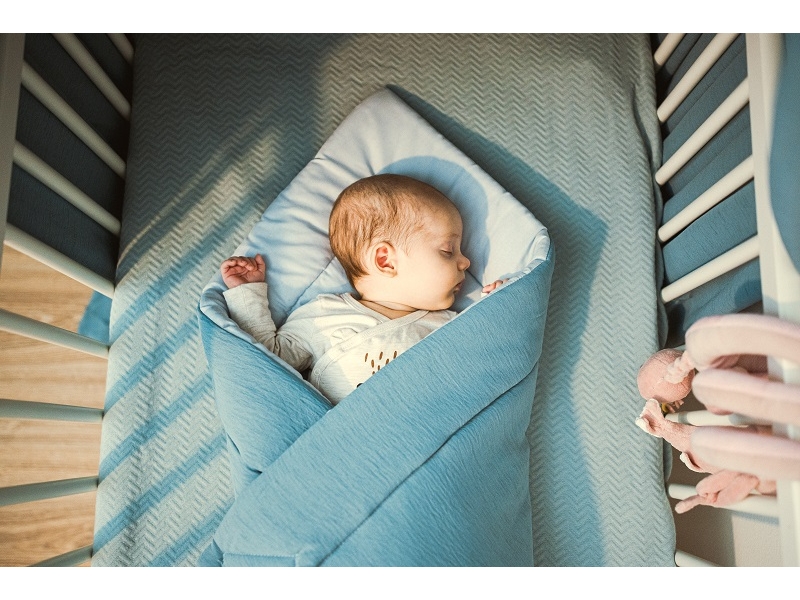It is important to make sure that your baby’s room is a comfortable temperature – not too hot or too cold. The chance of SIDS is higher in babies who get too hot, so try to keep the room temperature between 16 -20°C.
It is important to make sure that your baby is a comfortable temperature – not too hot or too cold. The chance of SIDS is higher in babies who get too hot. A room temperature of 16-20°C – with light bedding or a lightweight, well-fitting baby sleep bag– is comfortable and safe for sleeping babies.
BM-03 monitors room temperature
The evaluation unit is equipped with a room temperature sensor. It serves to indicate the room is overheated, which may be one of the causes of sudden infant death syndrome. The device can thus indicate a room temperature that is quite likely uncomfortable, however, responsibility for the temperature and quality of the environment lies with the parent or other caregiver.
How to check if your baby is too hot or too cold
Every baby is different and our advice on room temperature is intended as a guide. So while it’s important to be informed about overheating, you need to check your baby regularly to see if they are too hot.
Feel your baby’s chest or the back of their neck (your baby’s hands and feet will usually be cooler, which is normal). If your baby’s skin is hot or sweaty, remove one or more layers of bedclothes or bedding.
Our advice on bedclothes and bedding
Babies who are unwell need fewer, not more bedclothes.
Babies do not need to wear hats indoors, nor sleep under a duvet or quilt.
The benefit of sharing a room with your baby
Remember that the safest place for your baby to sleep is in the same room with you for the first six months – this will be especially helpful in judging the temperature they will be sleeping at.
FAQ: I’m worried about my baby overheating in warm weather, what can I do?
BM-03 flashing orange = room temperature is higher than 28 °C. It is advisable to reduce it, for example by airing or turning down the heating, to prevent the baby from overheating. We appreciate how difficult it can be to keep your baby’s room between the ideal 16-20⁰C in the warmer months, knowing that overheating can pose a risk. If the room where the baby sleeps is difficult to cool, follow the ‘summer rules’ of lighter bedding and clothing and open the bedroom door and a window, if it is safe to do so.
You might also like to use a fan to cool the room, but don’t aim it directly on the baby.
When the weather is hot it is important to make sure that your baby has plenty of fluids. Fully breastfed babies don’t need any extra water until they start eating solid food. During hot weather they may want to breastfeed more than usual. If you’re bottle feeding, as well as their usual milk feeds, you can give your baby a little cooled boiled water. If your baby wakes at night, they’ll probably want milk. If they have had their usual milk feeds, try cooled boiled water as well.
FAQ: My home is below the ideal temperature in the winter, should I keep the heating on all night?
BM-03 flashing blue = the room temperature is below 16.5 °C. It is a cooler environment, but it may be comfortable for you and your baby.
It is rarely necessary to keep your heating on all night, and adding an extra layer will usually help. Remember not to add a hat to your baby when they are indoors, as their head is important for
maintaining their body temperature by releasing heat.
If you do feel your home is too cold and you want to leave the heating on all night, make sure it is set at a low temperature, and certainly no higher than 20⁰C.
If you are interested in this topic, you can find more information on the website www.lullabytrust.org.uk

